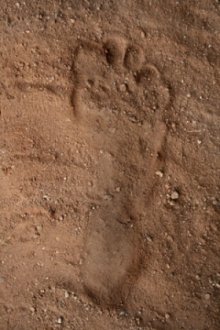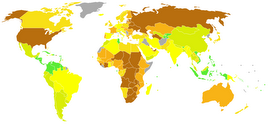What is my Ecological footprint?
 Have you ever noticed your footprints in the sand? When you step, you leave a mark which can last a long time after you have left.
Have you ever noticed your footprints in the sand? When you step, you leave a mark which can last a long time after you have left.
In the same way, humans place pressure on the environment by the way they live their lives. Scientists came up with the idea of the “ecological footprint” to show how hard we tread on the Earth’s resources.
How large is your ecological footprint?
The size of your ecological footprint depends on how much biologically productive land and water you require to live your life. You can reduce your ecological footprint by not wasting electricity and water, cycling or walking to places close by rather than driving, and eating locally produced rather than imported food.
The average South African’s ecological footprint is 2.8 hectares of food, fibre, timber, land and energy, according to the World Wildlife Fund’s 2001 Living Planet report. But the Earth can only support an average of 1.8 hectares per person. Can we afford to take more than our fair share of resources from the Earth?
Every person can make a difference by changing her or his pattern of behaviour.
The quantity of resources you require to continue living the way you do is called your “ecological footprint”. In 2001, the World Wildlife Fund’s Living Planet report estimated that populations on Earth had an ecological footprint about 20% bigger than what the Earth could sustain. This means humans are taking more than what the Earth can replenish in a given year. We are running up an ecological debt and soon the Earth’s “natural capital” will run out. We cannot sustain this trend.
Your ecological footprint is how much of the Earth’s biologically productive land you need to support your lifestyle
If you are careful about the amount of electricity and fuel you use, the types of food you eat, the amount of water you use and the amount of waste you produce, you could have quite a small footprint – which is good for the environment. But if we all live by consuming too many of the Earth’s resources, the Earth won’t be able to recover in time to support the lifestyles of future generations.
The World Wildlife Fund has calculated that South Africans have an average ecological footprint of 2.8 hectares. That is how much food, fibre, timber, land and energy we use to live our lives each year. But nature is only able to renew the supply of 1.8 hectares per person, which means that we are running on overdraft.



|
Optoma PT105, WVGA, 75 LED Lumens, Gaming Projector CE (Optoma)
|
 The Happy Planet Index (HPI) is an index of human well-being and environmental impact that was introduced by the New Economics Foundation (NEF) in July 2006. The index is designed to challenge well-established indices of countries’ development, such as Gross Domestic Product (GDP) and the Human Development Index (HDI), which are seen as not...
The Happy Planet Index (HPI) is an index of human well-being and environmental impact that was introduced by the New Economics Foundation (NEF) in July 2006. The index is designed to challenge well-established indices of countries’ development, such as Gross Domestic Product (GDP) and the Human Development Index (HDI), which are seen as not...